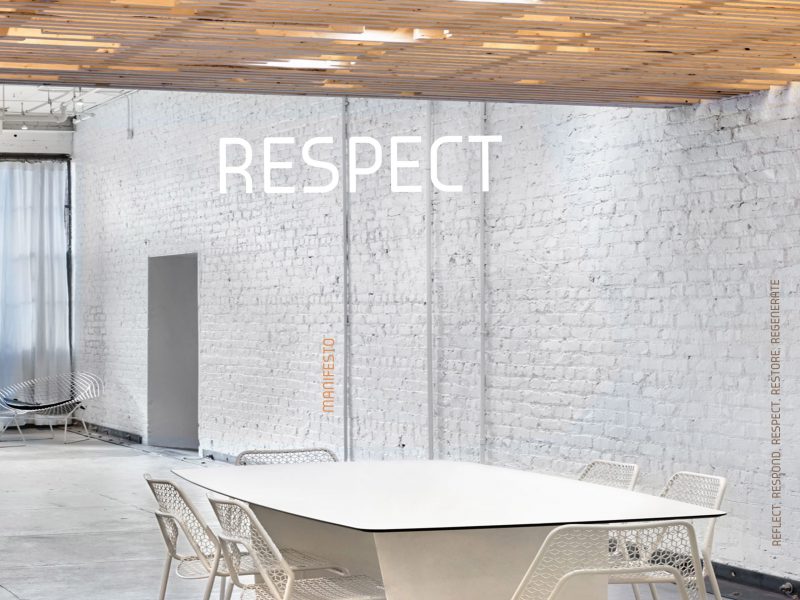A MODERN MANIFESTO: Respect
An architect’s modern manifesto.
5 R’s (Reflect, Respond, Respect, Restore, Regenerate)
RESPECT: ARCHITECTURE EXISTS IN CONTEXT… URBAN, NATURAL, AND CULTURAL
The architectural project never takes place in a vacuum.
The context that we face today is more complex, layered and nuanced than any that has preceded it. We work piece by piece into a world that is not always well conceived, created of different layers of success and failure in planning and building. On top of this, time has passed. Now places, specific structures, and larger districts are imbued with an overlay of human history — some shared public sense of their significance and cultural importance.
Understanding and working with the circumstances that surround us grounds our work and is an act of respect for the community. This is an exercise that involves equal parts 1) recognition: what and who have come before and 2) innovation: the next, logical evolution from a land use, environmental and cultural perspective. Some of these factors are defined in subjective terms, so stakeholder engagement is critical as a preliminary step towards creating a common vocabulary through which a project may be discussed.
On a planet with nearly 8 billion human souls and an exponentially increasing rate of global warming, issues of housing, climate change, and the related issues of disaster relief and human equity are inexorably intertwined. Working within this tangled web with the understanding that the building sector is the single largest source of carbon in our atmosphere, we as architects face the intersection of technical and social crises as a portion of our everyday work. As we attempt to green this largest piece of the infrastructure we encounter, the difficult interplay of tradition and progress, science and society that are, incomprehensibly, at odds with each other in this most critical moment.
In the course of our work, we weigh necessary change against the challenges that go along with it. In cities, where there has been a resurgence of demand for a tight-knit, pedestrian lifestyle, we are working into intact and semi-intact urban fabrics to create contemporary space in historic settings. The continuity of the street wall, and the history of the community create a seen and unseen amorphous context, that we must decipher. Approaching this work with a sense of respect, for each other and for the planet is critical to our success. The public sphere must be studied, comprehended, and integrated to create an architecture that is relevant.
In the rural setting, life has always been more direct. Our work in this context is always closer to the land. Topography, the natural land features, and prevailing climate defines this context along with the real consideration of the flow of resources through these isolated settings. The best works of architecture do more than provide shelter, they enhance their surroundings, honor the land, and model a regenerative relationship with the ecosystem.
In between there are amorphous suburbs that defy form and function poorly from planetary and cultural perspectives. Urban sprawl and the issues of traffic and resource consumption that go along with it are well documented. Many of the social ills of our time; depression, addiction, suicide are problems of distress and alienation, as described in Phillip Slater’s seminal 1970 book “The Pursuit of Loneliness.” Although the critique of this pattern is complete, the solution, the adaptation, is unclear. People enjoy their space, or at least they’ve been sold on a lifestyle premised on individuality and separation. Perhaps respect, an acknowledgment of the “other” whether that other is a neighbor, a forest, or a nation, is the point from which we can begin to re-engage and create a more equitable, just and sustainable world. Doing nothing, business as usual, is no longer an option.

